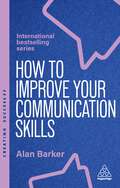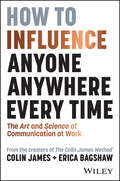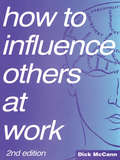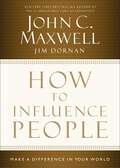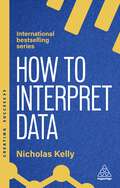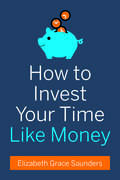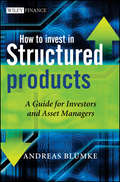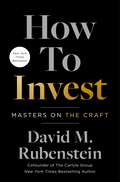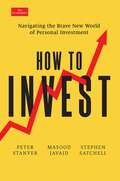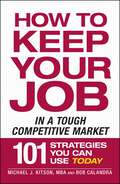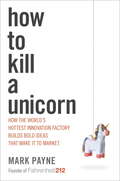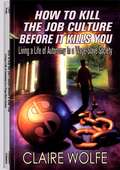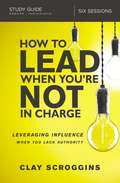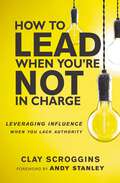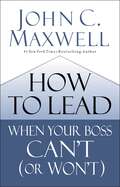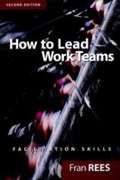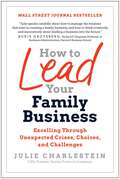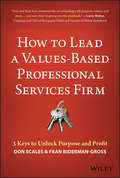- Table View
- List View
How to Implement Market Models Using VBA
by Francois GoossensAccessible VBA coding for complex financial modelling How to Implement Market Models Using VBA makes solving complex valuation issues accessible to any financial professional with a taste for mathematics. With a focus on the clarity of code, this practical introductory guide includes chapters on VBA fundamentals and essential mathematical techniques, helping readers master the numerical methods to build an algorithm that can be used in a wide range of pricing problems. Coverage includes general algorithms, vanilla instruments, multi-asset instruments, yield curve models, interest rate exotics, and more, guiding readers thoroughly through pricing in the capital markets area. The companion website (http://implementmodinvba.com/) features additional VBA code and algorithmic techniques, and the interactive blog provides a forum for discussion of code with programmers and financial engineers, giving readers insight into the different applications and customisations possible for even more advanced problem solving.. Financial engineers implement models from a mathematical representation of an asset's performance by building a program that performs a valuation of securities based on this asset. How to Implement Market Models Using VBA makes this technical process understandable, with well-explained algorithms, VBA code, and accessible theoretical explanations. Decide which numerical method to use in which scenario Identify the necessary building blocks of an algorithm. Write clear, functional VBA code for a variety of problems. Apply algorithms to different instruments and models . Designed for finance professionals, this book brings more accurate modelling within reach for anyone with interest in the market. For clearer code, patient explanation, and practical instruction, How to Implement Market Models Using VBA is an essential introductory guide.
How to Improve Your Communication Skills: How to Build Trust, Be Heard and Communicate With Confidence (Creating Success)
by Alan BarkerBetter communication skills will have a direct impact on your career development. Improve Your Communication Skills is your practical guide to effective communication in business.This fully updated 7th edition now features a handy self-assessment tool to help you profile your own preferred communication style, even more practical exercises, useful checklists and top tips, as well as content on influencing others and managing difficult conversations. This book provides vital guidance on improving your conversations, building rapport, giving effective presentations, writing excellent reports and networking successfully. With the help of Improve Your Communication Skills, you will be able to get your message across - every time.The Creating Success series of books...Unlock vital skills, power up your performance and get ahead with the bestselling Creating Success series. Written by experts for new and aspiring managers and leaders, this million-selling collection of accessible and empowering guides will get you up to speed in no time. Packed with clever thinking, smart advice and the kind of winning techniques that really get results, you'll make fast progress, quickly reach your goals and create lasting success in your career.
How to Induce Retailers to Reduce Stockouts?
by V. G. NarayananDescribes how the lack of incentive alignment between retailers and their vendors can lead to stockouts. Also describes various means to reduce incentive misalignment and hence stockouts.
How to Influence Anyone, Anywhere, Every Time: The Art and Science of Communication at Work
by Colin James Erica BagshawWe communicate all the time. But do we have impact? Do we influence? When you speak, do people lean in? When they hear you, do others feel impressed, challenged, motivated or inspired? Through tested frameworks and instantly applicable techniques, How to Influence Anyone, Anywhere, Every Time shows you how to use your words and your body language to engage and persuade. With this handbook, you'll learn crucial communication skills for delivering with impact in any professional setting — be it in the boardroom, your next sales meeting or interpersonal interactions. Master how to deliver your message with conviction, confidence and clarity. Globally renowned speaking coaches Colin James and Erica Bagshaw share their proven methodology for wielding influence in any and every context. In How to Influence Anyone, Anywhere, Every Time, they show you how to systematically get and hold people’s attention — and use your influence to achieve positive results in your organisation or business. Whether you’re working face-to-face, you need to create presence online, or you’re crafting a written message, you’ll discover the tips you need. Communicate more effectively with a tried-and-trusted process for success, using the 3 Ds: Diagnose: Who is your audience, what is the context and what is your desired outcome? Design: Get the magic 12 steps that make it easy to tailor your next communication to better engage and influence your audience. Deliver: Don't know what to do with your hands? Learn how to master body language, your voice, visual aids and even your energy for a delivery that will captivate, inspire and persuade even the toughest audience. How to Influence Anyone, Anywhere, Every Time is a must-have resource for anyone who needs to present their ideas, gain trust and bring about real change.
How to Influence Others at Work: Psychoverbal Communication For Managers
by Dick McCannBeing able to influence others is absolutely vital to the business manager who is not only responsible for their own destiny, but also the well-being of their staff and the future of their company. Getting people to do what you want them to has occupied the minds of generations of scholars, not to mention dictators. Among the former, the psychologist Carl Jung was perhaps the most prominent. His concepts of the extroverted and introverted personality, of archetypes and of the unconscious are now widely accepted. However, to understand and benefit properly from Jung, you need years of training. Fortunately though, Professor McCann has adapted Jung's ideas to the workplace and made them easy for us to understand. Not only that, in How to Influence Others at Work, he also combines his own remarkable techniques with those of neurolinguistics, resulting in an easy to digest volume which shows how all of us can use influence to our own ends.In this second edition the author has included a new chapter on communication channels. This chapter gives practical guidance on how to improve awareness in all aspects of communications.
How to Influence People: Make a Difference in Your World
by John Maxwell Jim DornanYou can make a difference! Believe it or not, the most effective way to make an impact on the world is to make an impact on individual people. How do you do that? Through influence. In How to Influence People, leadership guru John C.Maxwell and his friend Jim Dornan tell you how to make a positive impact on every person in your life, from your children and coworkers to your customers and the barista at the coffee shop. How to Influence People will empower you to become a potent and positive influence in the lives of those around you without using a position or title. By "pouring your life into other people" (Dr. Maxwell's definition of mentoring),"you can truly make a difference in their lives." And when you make a difference in the lives of others, it makes a difference in your life too.Learn to perceive the stages of influence in your relationships and skillfully navigate your progress from perfect stranger to helpful confidant, to inspiring mentor and multiplier of influencers. Let this book impact your relationships, great and small, and make you a positive influencer and better leader in the lives of those around you.
How to Interpret Data: Using Data to Improve Your Influence and Decision-making (Creating Success)
by Nicholas KellyThe best business decisions and strategies are always data-driven. Improve your understanding of data and your digital literacy with How to Interpret Data.Data is a cornerstone of our decision-making, but the ability to effectively interpret data is challenging to master. This book demystifies the process of data interpretation, providing you with the tools and knowledge you need to develop smart data-driven strategies.Packed full of fascinating interviews and stories which uncover the potential of data-driven strategies, this book will show you not only how to effectively interpret data, but will also uncover how you can use this knowledge to improve your decision-making and influence at work.
How to Invest Your Time Like Money
by Elizabeth Grace SaundersHow to Invest Your Time Like Money is a concise, practical guide to get you out of time debt. Unlike others, who create the false hope that if only you worked harder, faster, longer, and smarter, you could do everything you want and make everyone happy, time coach Elizabeth Grace Saunders introduces a process to better manage your limited time so you can focus on what's important. Her method will help you avoid letting everyday pressures and demands get in the way. Using proven techniques and exercises based on the principles of personal finance, readers will learn to identify their time debt, create a balanced budget, build a base schedule, maximize their time ROI, and identify a process to get back on track-and stay there.
How to Invest in Structured Products
by Andreas BluemkeThis book is essential in understanding, investing and risk managing the holy grail of investments - structured products. The book begins by introducing structured products by way of a basic guide so that readers will be able to understand a payoff graphic, read a termsheet or assess a payoff formula, before moving on to the key asset classes and their peculiarities. Readers will then move on to the more advanced subjects such as structured products construction and behaviour during their lifetime. It also explains how to avoid important pitfalls in products across all asset classes, pitfalls that have led to huge losses over recent years, including detailed coverage of counterparty risk, the fall of Lehman Brothers and other key aspects of the financial crisis related to structured products. The second part of the book presents an original approach to implementing structured products in a portfolio.Key features include:A comprehensive list of factors an investor needs to take into consideration before investing. This makes it a great help to any buyer of structured products;Unbiased advice on product investments across several asset classes: equities, fixed income, foreign exchange and commodities;Guidance on how to implement structured products in a portfolio context;A comprehensive questionnaire that will help investors to define their own investment preferences, allowing for a greater precision when facing investment decisions;An original approach determining the typical distribution of returns for major product types, essential for product classification and optimal portfolio implementation purposes;Written in a fresh, clear and understandable style, with many figures illustrating the products and very little mathematics.This book will enable you to better comprehend the use of structured products in everyday banking, quickly analyzing a product, assessing which of your clients it suits, and recognizing its major pitfalls. You will be able to see the added value versus the cost of a product and if the payoff is compatible with the market expectations.
How to Invest: Masters on the Craft
by David M. RubensteinNEW YORK TIMES BESTSELLER A master class on investing featuring conversations with the biggest names in finance, from the legendary cofounder of The Carlyle Group, David M. Rubenstein.What do the most successful investors have in common? David M. Rubenstein, cofounder of one of the world&’s largest investment firms, has spent years interviewing the greatest investors in the world to discover the time-tested principles, hard-earned wisdom, and indispensable tools that guide their practice. Rubenstein, who has spent more than three decades in the hypercompetitive world of private equity, now distills everything he&’s learned about the art and craft of investing, from venture capital, real estate, private equity, hedge funds, to crypto, endowments, SPACs, ESG, and more. -How did Stan Druckenmiller short the British pound in one trade for a profit of $1 billion dollars? -What made Sam Zell the smartest, toughest investor the world of real estate has ever seen? -How did Mike Novogratz make $250 million off crypto in one year? -How did Larry Fink build BlackRock from scratch into a firm that manages more than $10 trillion? -How did Mary Callahan Erdoes rise to the top of J.P. Morgan&’s wealth management division to manage more than $4 trillion for individuals and families all over the world? -How did Seth Klarman perfect value investing to consistently deliver net returns of nearly 20 percent? With unprecedented access to global leaders in finance, Rubenstein has assembled the most authoritative book of its kind. How to Invest reveals the thinking of the most successful investors in the world, many of whom rarely speak publicly. Whether you&’re brand-new to investing or a seasoned professional, this book will transform the way you approach investing forever.
How to Invest: Navigating the Brave New World of Personal Finance (Economist Books)
by Peter Stanyer Stephen Satchell Masood JavaidA dynamic new guide to personal investment for the era of cryptocurrencies and personal trading platforms.We&’re all investors now. The first quarter of the new century has seen developments in technology, monetary policy, and the management of large companies that have transformed personal savings and investment around the world. Love it, loathe it, or just not interested in it, this innovation has changed not only the nature of money, but our understanding of what it means to invest—whether we want to safeguard our pensions, experiment with personal trading platforms, or simply understand how the markets really work. How to Invest aims to help investors navigate this new world, offering a principles-based, keep-it-simple approach to help them make investment decisions and have investment conversations that will make the most of their money.
How to Keep Your Job in a Tough Competitive Market: 101 Strategies You Can Use Today
by Bob Calandra Michael J KitsonMergers, outsourcing, and downsizing are the order of the day-and tomorrow as well. And employees everywhere now live in fear of layoffs. In this no-nonsense career guide, HR experts from the front lines demonstrate how to become invaluable at work and fend off a pink slip. The authors explain how to:Make yourself and your contributions visibleStay aware of trends, anticipate change, and adaptAcquire a reputation as a positive team playerBecome the "go-to" person It is possible to weather the storm that's swiftly tearing through every industry in America. With this book, you get an insurance policy to you them hold onto you paycheck and remain gainfully employed!
How to Kill Creativity
by Teresa M. AmabileBased on 22 years of breakthrough research, this article by Teresa Amabile, MBA Class of 1954 Professor of Business Administration at the Harvard Business School, provides insightful guidelines for any executive who wants to nurture and stimulate one of the most powerful competitive weapons in the realm of business today: creativity. In today's knowledge economy, creativity is more important than ever. But many companies unwittingly employ managerial practices that kill it. How? By crushing their employees' intrinsic motivation--the strong internal desire to do something based on interests and passions. Managers don't kill creativity on purpose. Yet in the pursuit of productivity, efficiency, and control--all worthy business imperatives--they undermine creativity. It doesn't have to be that way. Business imperatives can comfortably coexist with creativity. But managers will have to change their thinking first. Specifically, managers will need to understand that creativity has three parts: expertise, the ability to think flexibly and imaginatively, and motivation. Managers can influence the first two, but doing so is costly and slow. It would be far more effective to increase employees' intrinsic motivation. Take challenge as an example: Intrinsic motivation is high when employees feel challenged but not overwhelmed by their work. The task for managers, therefore, becomes matching people to the right assignments. Managers can make a difference when it comes to employee creativity. The result can be truly innovative companies in which creativity doesn't just survive but actually thrives.
How to Kill a Unicorn
by Mark PayneA unique behind-the-scenes look at the groundbreaking methodology that today's most in-demand innovation factory uses to create some of the boldest products and successfully bring them to market. Today, innovation is seen by business leaders and the media alike as the key to growth, a burning issue in every company, from startups to the Fortune 500. And in that space, Fahrenheit 212 is viewed as a high-performance innovation SWAT team, able to solve the most complex, mission-critical challenges. Under Mark Payne, the firm's president and head of Idea Development, Fahrenheit 212, since its inception a decade ago, has worked with such giants of industry as Coca-Cola, Samsung, Hershey's, Campbell's Soup, LG, Starbucks, Mattel, Office Depot, Citibank, P&G, American Express, Nutrisystem, GE, and Goldman Sachs, to name but a few. It has been praised as a hotspot for innovation in publications like Fortune, Esquire, Businessweek, and FastCompany. What Drives Fahrenheit 212's success is its unique methodology, combining what it calls Magic--the creative side of innovation--with Money, the business side. They explore every potential idea with the end goal in mind--bringing an innovative product to market in a way that will transform a company's business and growth. In How to Kill a Unicorn, Mark Payne pulls back the curtain on how the company is able to bring more innovative products and ideas successfully to market than any other firm and offers blow by blow inside accounts of how they grapple with and solved their biggest challenges.
How to Kill the Job Culture Before It Kills You: Living a Life of Autonomy in a Wage-Slave Society
by Claire WolfeLibertarian suggests alternatives to the current work patterns, and ways to figure out what you really want and how to get it.
How to Kill the Scrum Monster: Quick Start to Agile Scrum Methodology and the Scrum Master Role
by Ilya BibikImplement Scrum or improve how Scrum works in your team or organization using this concise, sharp, and programmatic book. You will quickly learn what you need to know without getting confused with unnecessary details.What You'll LearnBecome familiar with Agile concepts and understand the path from Waterfall to the Agile ManifestoUnderstand the most commonly used Agile methodology—Scrum—and how it relates to eXtreme Programming and Kanban as well as to Lean principlesIdentify the challenges of the Scrum Master role and understand what this role is all aboutKnow the stages of Scrum team developmentEmbrace and solve conflicts in a Scrum teamWho This Book Is ForAnyone looking for a simple way to understand Scrum methodology
How to Knit Beautiful Bags: 22 Gorgeous Designs
by Sian BrownKnitted and crocheted accessories are totally on trend, and bags are particularly popular. They are relatively quick to make and knitters of all abilities can try new techniques that don’t take too long to complete. Sian has created 22 designs in a range of sizes and styles, suitable for beginners as well as more experienced knitters. They include colourwork, lace, cables and texture stitches, and are knitted using a variety of different yarns. All the bags are beautifully finished with coordinating fabric linings, pockets, and wadding to help them keep their shape, and are embellished with knitted flowers, buttons, bows and pompoms. There is a range of designs to choose from, including simple bags, totes, summer bags and evening bags, and the extensive techniques section at the back of the book provides step-by-step guidance on colourwork; embellishments such as surface embroidery, beads, knitted flowers and pompoms; making up and lining your bag; how to attach zips, buttons and other fastenings; and plaited cords and handles. Sian’s delightfully fresh and appealing designs and attention to detail make this an attractive book for all knitters.
How to Land a Top-Paying Federal Job: Your Complete Guide to Opportunities, Internships, Resumes and Cover Letters, Networking, Interviews, Salaries, Promotions, and More!
by Lily WhitemanWritten by a successful career coach who herself has climbed the federal career ladder and served as a hiring manager, this indispensable book is the ultimate guide to securing a job in government work. How to Land a Top-Paying Federal Job steers federal applicants through every stage of their job search--from finding unadvertised openings and getting interviews to sealing enviable deals and even getting promoted. You&’ll gain insights from more than one hundred federal hiring managers, and learn the secrets to impressing these gatekeepers online, on paper, and in person.This updated second edition includes:more get-ahead tips,the latest hiring advice on writing winning applications,expanded directories for internships,listings of fast-track management training programs and fellowships,and information on emerging helpful websites and other resources.Complete with a companion CD filled with sample resumes, checklists, and templates, How to Land a Top-Paying Federal Job gives business professionals with big dreams of climbing the federal career ladder the inside scoop on landing some of the nation's most secure, well-paying, and rewarding jobs.
How to Lead Nonprofits: Turning Purpose into Impact to Change the World
by Nick Grono&“Many go into nonprofit leadership unprepared for the twin demands of business management and measurable social impact. Finally, we have a resource that guides the way. Nick Grono&’s masterful How to Lead Nonprofits is a book I will be recommending for years to come.&” —Arthur C. Brooks, Professor, Harvard Kennedy School and Harvard Business School, and #1 New York Times Bestselling Author, Strength to Strength For nonprofit leaders who want to strengthen their leadership and increase the effectiveness of their organizations, a guide to achieving greater impact—featuring success stories from real nonprofit leaders Nonprofit leadership is hard. Most new nonprofit leaders are ill-prepared for the challenges they will face, and even those who are more experienced struggle to ensure their organizations deliver the change they are committed to. Nonprofits are not meant to be run like businesses—different incentives drive different priorities. In particular, nonprofit leaders have a key advantage over business leaders in that purpose is fundamental to their organization&’s work. From Nick Grono, CEO of the Freedom Fund and a nonprofit leader with decades of experience, How to Lead Nonprofits offers a leadership framework centered on what matters most for success: Achieving outsize impact by pursuing your organization's purpose Building an inclusive culture that motivates and empowers your team Partnering with the community you serve, funders, and peer organizations to scale impact With examples and testimony from nonprofit and charity leaders around the world, framed by Grono&’s own expertise, this is a highly usable guide to harnessing the power of purpose to shape everything your organization does—internally and externally—as you seek to change the world.
How to Lead When You're Not in Charge Study Guide: Leveraging Influence When You Lack Authority
by Clay ScrogginsThe greatest myth of leadership is that you must be in charge in order to lead.In this six-session, video study (DVD/streaming video sold separately), based on the How to Lead When You're Not in Charge book, Clay Scroggins shares his first-hand leadership experience as a pastor and his discovery that great leaders aren't paralyzed by not being in a position of recognized authority… Great leaders lead with or without that authority and learn to unleash their positive influence wherever they are.He explains the nature of leadership and what it takes to lead yourself and others well with or without that impressive title.In this study you will:Learn to leverage influence instead of authorityCreate a game plan for leading yourself well Change the energy of your team by choosing positivityCultivate influence by thinking critically, not being criticalAvoid the trap of passivity when you feel out of controlLearn an effective way to challenge people in authority over you How to Lead When You're Not in Charge Study Guide will free you to become the great leader you want to be so you can make a difference right where you are—whether it&’s in your workplace, community, or church. Even when you're not in charge.Sessions include: The Oddity of Leadership Lead Yourself Choose Positivity Think Critically Reject Passivity Challenging Up Designed for use with the How to Lead When You&’re Not in Charge Video Study 9780310095934 (sold separately).
How to Lead When You're Not in Charge: Leveraging Influence When You Lack Authority
by Andy Stanley Clay Scroggins"This book will be one of the most, if not the most, pivotal leadership books you'll ever read." - Andy Stanley"If you're ready to lead right where you are, this book can show you how to start." - Dave Ramsey"Read this book! The marketplace is full of leadership messages, but this one is a stand out." - Louie GiglioAre you letting your lack of authority paralyze you?One of the greatest myths of leadership is that you must be in charge in order to lead. Great leaders don't buy it. Great leaders lead with or without the authority and learn to unleash their influence wherever they are.With practical wisdom and humor, Clay Scroggins will help you nurture your vision and cultivate influence, even when you lack authority in your organization. And he will free you to become the great leader you want to be so you can make a difference right where you are. Even when you're not in charge. X
How to Lead When Your Boss Can't (or Won't)
by John C. MaxwellEvery day millions of people with high potential are frustrated and held back by incompetent leaders. New York Times bestselling leadership author John C. Maxwell knows this because the number one question he gets asked is about how to lead when the boss isn’t a good leader.You don’t have to be trapped in your work situation. In this book, adapted from the million-selling The 360-Degree Leader, Maxwell unveils the keys to successfully navigating the challenges of working for a bad boss. Maxwell teaches how to position yourself for current and future success, take the high road with a poor leader, avoid common pitfalls, work well with teammates, and develop influence wherever you find yourself.Practicing the principles taught in this book will result in endless opportunities—for your organization, your career, and your life. You can learn how to lead when your boss can’t (or won’t).
How to Lead Work Teams
by Fran ReesWhile the first edition of this guide, published in 1991, focused on making the transition from "manager" to "team leader," this latest edition explores the idea of leading teamwork in dynamic, change- driven organizations. The need for facilitative leaders is greater now because managers are working in faster-paced arenas, in more volatile markets, with fewer precedents and greater consequences. The guide is intended for team leaders, project managers, HR professionals, organization consultants, trainers, and anyone who must take a leadership role to get their job done. Rees is a Phoenix-based consultant who specializes in team development, team leadership, and facilitation training. Annotation c. Book News, Inc., Portland, OR (booknews.com)
How to Lead Your Family Business: Excelling Through Unexpected Crises, Choices, and Challenges
by Julie CharlesteinWall Street Journal Bestseller As a fourth-generation company president/CEO, Julie Charlestein has developed a unique set of strategies for navigating the distinctive challenges and choices facing family businesses. How to Lead Your Family Business is a master class in working with and for family, reshaping generations-old company cultures, earning your colleagues&’ respect, and more. Family businesses, from massive corporations like Walmart to the mom-and-pop store on your local street, have always been a vital part of the American life and economy. But as these family-owned companies evolve and grow, so too do their unique difficulties and the need for dynamic leadership. And as more women rise into leadership roles within commonly male-dominated organizations, challenges abound in already tense environments, where family members also happen to be one&’s coworkers—and superiors. Julie Charlestein, the president and CEO of Premier Dental Products Company, is the fourth-generation leader of an incredibly successful family-owned enterprise, and she&’s seen it all firsthand, including family drama in the workplace and the office politics that come with any corporation. In How to Lead Your Family Business, Julie gets vulnerable about her experience as an emerging leader and ultimately CEO, who has worked to earn her colleagues&’ respect while navigating the succession to her father&’s company. Through stories full of candor and humor, Julie shares her leadership adventure, offering actionable strategies for those leading and working within their own family businesses.
How to Lead a Values-Based Professional Services Firm: 3 Keys to Unlock Purpose and Profit
by Don Scales Fran Biderman-GrossWe live in a values-driven world. As times change, businesses must evolve. The way that leaders have run companies for generations is no longer relevant.Today -- Purpose wins over products. Values win over features. Stories win over pitches.Everyone everywhere craves fulfillment. You must share the reason why you exist and infuse it into everything you do, in order to thrive. Many leaders see the shift in the market and make an effort to adapt. Companies quickly learn that one-off workshops and off-sites are not enough. Purpose is more than a press release. Your vision and mission statements should live in practice as well as print, and permeate through every aspect of your organization. You must close the gap between the messages you declare and the experiences you deliver. How to Lead a Values-Based Professional Services Firm shares the vital experience and valuable insights that leaders require to evolve their organizations and navigate the values-driven world we live in. • Live your purpose to stay alive and build a faithful following of clients and team members. • Employ your authentic values as your guide through the modern market and drive profitability. • Share meaningful stories that emotionally connect with today's clientele to transform them into tomorrow's brand ambassadors. 3 keys to unlock purpose and profit will enable you to turn the obstacles of the shifting market into your greatest opportunities, soar above your competitors, and grow your revenue beyond your highest projections.

